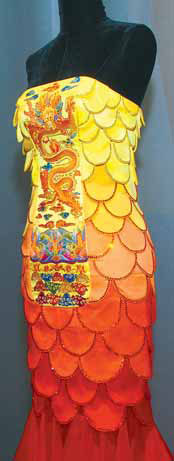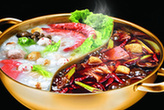 |
|
|
The reincarnations of the early 20th century dress - a fusion of Qing Dynasty (1644-1911) fashion and Western tailoring - does not always appear simple. Designers have had to adapt to the tastes of more sophisticated, globalized Chinese consumers, as well as a new generation of young women.
"Younger consumers would go for an edgy twist to the qipao in order not to be associated with their mom's style," says Antoine Neufmars, a Shanghai-based French stylist, who works with Chinese fashion and lifestyle magazines.
Foreigners, on the other hand, says Neufmars, prefer the dress' traditional look. The same goes for their choice in materials: They like fabrics such as silk brocade printed with the Chinese people's favorite lotus, peony and chrysanthemum flowers.
Reinventing the qipao also seems to be an effort to redefine its image in the 21st century. The dress, which emerged in the 1920s and soon became the rage in everyday Chinese fashion, disappeared from public life during the height of Chinese revolutionary zeal in the '60s and '70s.
The dress reappeared in the '80s, but it has not recovered its former popularity.
"It has become associated with ceremony attendants, hostesses and waitresses, a type of 'uniform', which has quickly isolated ordinary women," says Liu Qi, a lecturer at the Beijing Institute of Fashion Technology and associate curator of the university's Museum of Ethnic Costumes.
Women now primarily wear it on special occasions, like wedding banquets, Spring Festival celebrations and international gatherings. When it does make an appearance, sometimes the qipao might not even be recognized for what it is.
Imagine a black-lace-on-forest-green-silk concoction with a sweetheart neckline and two tiers of ruffles for sleeves. Below, behold a mermaid skirt surrounded by six layers of floor-draped ruffles.
Editor: MetalAllen





Why not rent a boyfriend, or girlfriend to please parents during the Spring Festival?